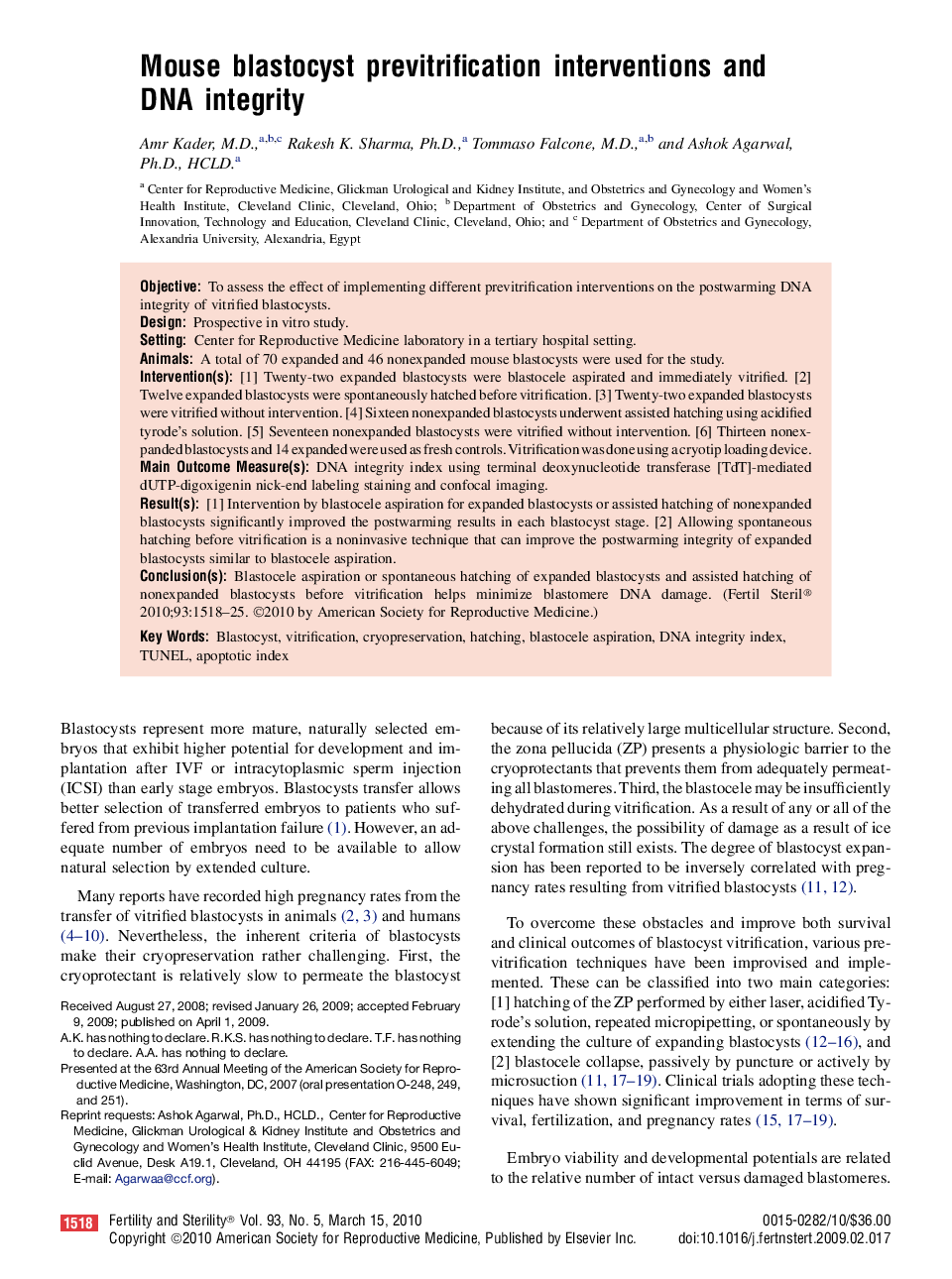| Article ID | Journal | Published Year | Pages | File Type |
|---|---|---|---|---|
| 3938229 | Fertility and Sterility | 2010 | 8 Pages |
ObjectiveTo assess the effect of implementing different previtrification interventions on the postwarming DNA integrity of vitrified blastocysts.DesignProspective in vitro study.SettingCenter for Reproductive Medicine laboratory in a tertiary hospital setting.AnimalsA total of 70 expanded and 46 nonexpanded mouse blastocysts were used for the study.Intervention(s)[1] Twenty-two expanded blastocysts were blastocele aspirated and immediately vitrified. [2] Twelve expanded blastocysts were spontaneously hatched before vitrification. [3] Twenty-two expanded blastocysts were vitrified without intervention. [4] Sixteen nonexpanded blastocysts underwent assisted hatching using acidified tyrode's solution. [5] Seventeen nonexpanded blastocysts were vitrified without intervention. [6] Thirteen nonexpanded blastocysts and 14 expanded were used as fresh controls. Vitrification was done using a cryotip loading device.Main Outcome Measure(s)DNA integrity index using terminal deoxynucleotide transferase [TdT]-mediated dUTP-digoxigenin nick-end labeling staining and confocal imaging.Result(s)[1] Intervention by blastocele aspiration for expanded blastocysts or assisted hatching of nonexpanded blastocysts significantly improved the postwarming results in each blastocyst stage. [2] Allowing spontaneous hatching before vitrification is a noninvasive technique that can improve the postwarming integrity of expanded blastocysts similar to blastocele aspiration.Conclusion(s)Blastocele aspiration or spontaneous hatching of expanded blastocysts and assisted hatching of nonexpanded blastocysts before vitrification helps minimize blastomere DNA damage.
